The large-scale and intensive production method of agriculture has been recognized as the only way for the development of modern agriculture, which has promoted a substantial increase in agricultural production efficiency. Nowadays, agricultural machinery has become the main productivity of intensive production methods. How to strengthen the scientific management of agricultural machinery has also become an important means to improve production efficiency and increase agricultural economic benefits.
With the rapid development and popularization of agricultural machinery, agricultural machinery fuel consumption testing is an indispensable basic research for agricultural machinery development enterprises to carry out energy-saving work and energy balance work, and carry out agricultural machinery technical transformation and improvement design.
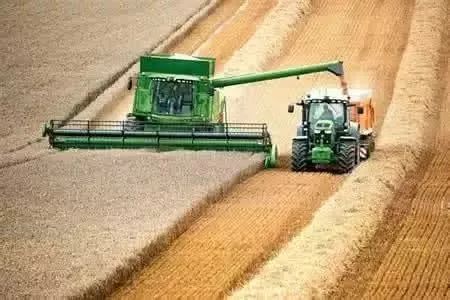
However, with the exception of a few large agricultural machinery manufacturers or professional research units that have high-precision and well-equipped fuel consumption testing methods and equipment, the vast majority of companies use balance weight weighing methods for fuel consumption testing. This method is complicated to operate, easy to add too much, and the measurement accuracy is not high, and it is susceptible to interference from factors such as environmental humidity and diesel volatile, resulting in large measurement errors.
Some companies also use liquid turbine flow meters to collect fuel consumption. This method is low in cost and easy to install. However, because the diameter of the turbine flowmeter is generally small and the diesel contains too much impurities, the internal oil passage of the flowmeter is often blocked by impurities during operation, and the failure rate is high. In response to the above problems, based on the study of the structure and working principle of the volumetric flowmeter, a method of selecting the rotary piston volumetric flowmeter to be installed on the oil circuit of the agricultural machine was proposed to measure the fuel consumption of the agricultural machine, and an experimental platform was built to test and analyze the The detection accuracy and reliability of the new flowmeter.
Structure and classification of volumetric flowmeter
Positive displacement flowmeter is also called positive displacement flowmeter. It is mainly composed of a metering body and a measuring part. The metering body is composed of a shell and a movable body (rotor of a rotameter). Among them, the core component is the movable body, which is the moving component in the measurement process. Each measuring cavity formed by the movable body and the shell is a standard volume unit, which is used to measure the volume of the fluid to be measured. The measuring part is actually a speed or counting sensor. One of the screw rods on the screw flowmeter is extended. The gear is embedded with magnetic material. When the screw rotates, the sensor can identify the screw speed through the magnetic effect, and convert it into a standard pulse signal or current signal, which is convenient for the measurement personnel to use the secondary meter to display the fuel consumption value or the computer to collect the signal and conduct further analysis And application.
There are many types of positive displacement flowmeters, which can be classified according to different principles. They are usually divided into rotor type, scraper type, rotary piston type, reciprocating piston type and diaphragm type according to the structure of the measuring element. Based on the rotary piston flowmeter, it has reliable operation , The measurement accuracy is high, the pressure loss is small, and when the viscosity of the medium is greater than 50 cp, the change of the viscosity has no effect on the accuracy. It is especially suitable for the measurement of the instantaneous flow and cumulative flow of liquids without solid particles. Therefore, this article uses the flowmeter sensor fuel consumption acquisition equipment made by Shanghai Kanghui Company to do fuel consumption measurement experiment, which is mainly composed of two rotary piston volumetric flow sensors and a display screen.
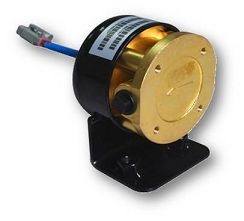

Working principle and installation method of rotary piston positive displacement flowmeter
Working principle of flow meter
As shown in Figure 1 (a), the measured liquid enters the inner cavity of the flow sensor from the inlet end, and a pressure difference is formed at the inlet and outlet ends, forcing the piston to rotate in the direction indicated by the arrow in the figure. As the liquid continues to flow in, the piston turns to the position shown in Figure 1 (b) to form a closed crescent-shaped cross-section cavity V1. Under the action of the differential pressure, the piston continues to rotate, and the previously formed closed crescent-shaped section V1 communicates with the outlet end and starts to discharge, as shown in Figure 1(c). When the piston rotates to the position shown in Figure 1 (d), another closed crescent-shaped cross-section volume cavity V2 is formed, and when it continues to rotate, the volume cavity V2 is connected to the outlet end and starts to discharge, and then the rotor again Return to the position shown in Figure 1 (a). In this way, for each revolution of the piston, the liquid flowing from the inlet and outlet ends is equal to the sum of the volumes V1 and V2.

Figure 1 Schematic diagram of the internal workings of the flowmeter
Under normal operation, the inside of the flowmeter is equivalent to a key switch. During the process of liquid inflow, it repeatedly shuts off the suction and forms a continuous pulse signal at the output port. By detecting the level change of the port and counting it, The number of pulses output within a certain period of time can be known, and the volume of liquid that can flow through a certain flow sensor according to formula (1):
V = n*K (1)
In formula (1), n ​​is the number of pulses collected from the flow sensor in a certain period of time, and K is the volume of fluid discharged by the sensor's rotor for one revolution.
Flowmeter installation method
The measurement of fuel consumption of diesel engines adopts the differential measurement method. Because the diesel engine has an oil inlet pipe and an oil return end, when the diesel engine is working, the diesel is sucked into the oil inlet pipe from the fuel tank, filtered by the oil-water separator, enters the fuel supply pump and then is pressed out from the fuel supply pump, and enters the fuel injector after being filtered by the fine filter. Spray, no spray
The injected diesel oil returns to the fuel tank through the return pipe. The fuel consumption measurement of diesel engines is the difference between the volume of fuel flowing through the fuel inlet pipe and the volume of fuel flowing through the fuel return pipe. Therefore, it is necessary to install a flow sensor on the fuel inlet pipe and the fuel return pipe (as shown in Figure 2). Some agricultural diesel engines do not have an oil return end or have very little oil return, so the oil return sensor may not be connected.
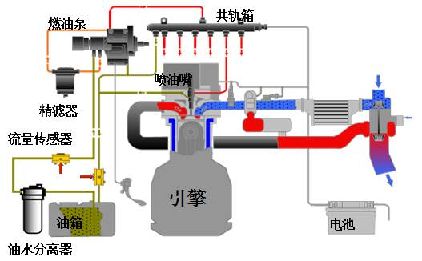
Figure 2 Schematic diagram of flowmeter sensor installation
An accurate fuel consumption metering flowmeter
U-How® Kanghui Flowmeter is independently developed and produced by Shanghai Kanghui Industrial Development Co., Ltd. according to the working principle of the rotary piston. It has the characteristics of low measuring flow rate, wide range, high accuracy, simple structure, safe and reliable operation, etc. Flow Sensors.
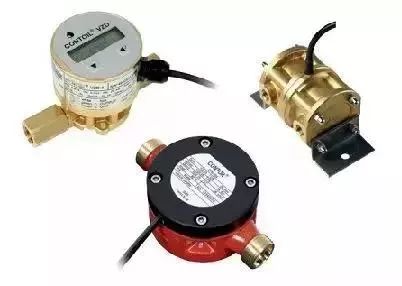
Exploded view of flow meter
Product parameter
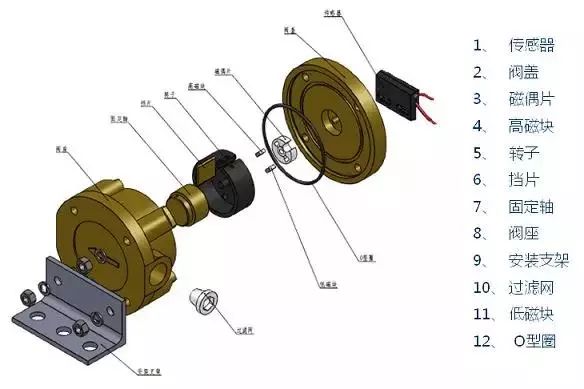
1. Mechanical part:
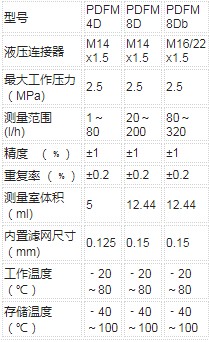
2. Electronic part:
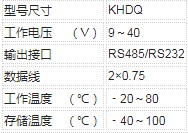
Measuring medium
Can measure light and medium oils, such as gasoline, diesel, kerosene, naphtha, lubricating oil
Product Qualification
1. Invention patent: ZL201020504169.8 flow sensor
2. Vehicle inspection report of National Automobile Quality Supervision and Inspection Center
3. The Ministry of Communications commissioned the Beijing Institute of Metrology and Accuracy Test Report
Fuel consumption monitoring solution
Application object
1. Engine:
Measure the fuel consumption of various power machines in trains, automobiles, engineering vehicles, tractors, generator sets, and ships navigating inland or offshore, as well as the loading and unloading metering of various heavier liquids and pipeline liquid metering.
2. Burner:
Fuel consumption measurement of equipment such as vehicle-mounted boilers and mobile boilers.
Data collection method
By collecting the pulse data of the flowmeter, the system integration of the equipment unit is connected with RS485/RS232
solution
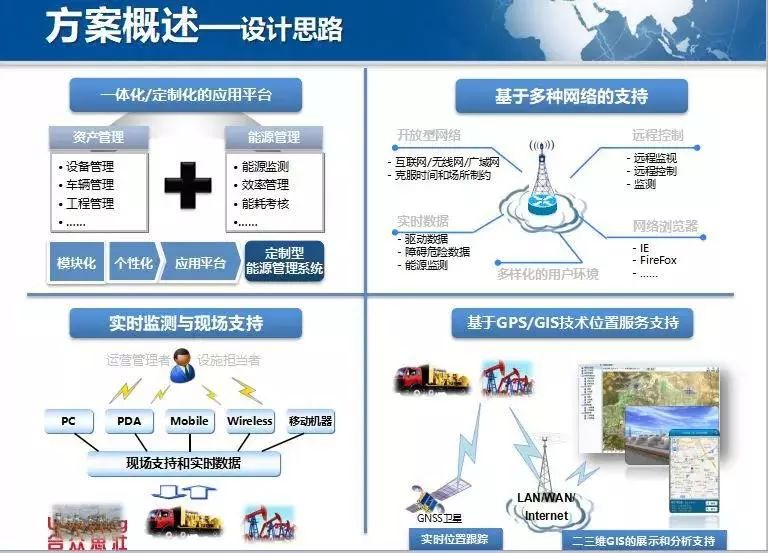

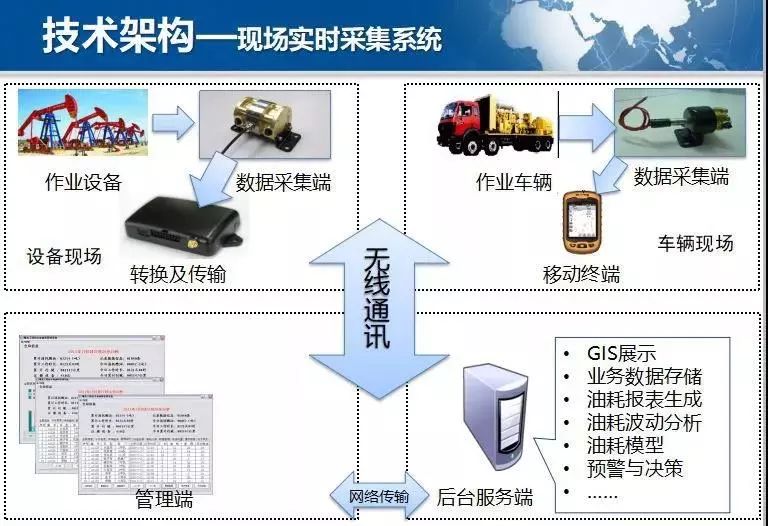
Fuel consumption measurement test results and analysis
The experimental platform uses a Fangtuo produced by a company in Guangxi (as shown in Figure 3). Its engine is a second-generation single-cylinder engine of “Shifengou†with a power of 14.7 kW. It consumes hourly at idle speed and no-load operation. The diesel is about 0.52L, and the diesel used by the square trailer for 100 kilometers without load is 9-11L. Install the flowmeter sensor as shown in Figure 4. Because the oil return pipe of this engine does not return to the fuel tank but directly returns to the filter, there is no need to install the oil return sensor. The fuel intake sensor converts the volume of diesel fuel flowing into a pulse signal and sends it to the display for processing. The fuel consumption value of the engine will be displayed on the display in real time.
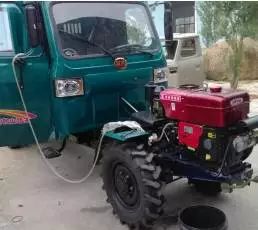
Figure 3 Square drag used in experimental test
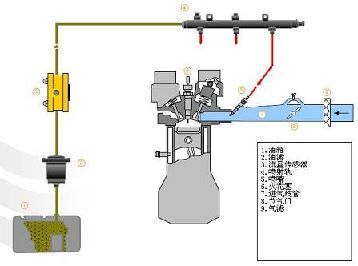
Figure 4 Single-cylinder diesel engine installation method
1. Fuel consumption test under idling conditions
Ignite the engine, and after it runs stably, read and record the fuel consumption value on the display every 10 minutes (see Table 1).
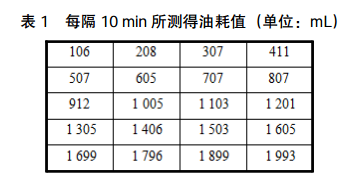
It can be seen from Figure 5 that the engine oil consumption increases steadily at an average value of 9.965 mL/min under idling conditions. A total of 1,993 mL of diesel is consumed in 200 minutes, and the average fuel consumption per hour is about 598 mL. The idling fuel consumption values ​​are basically in line with the error of 13.04%. Because the diesel engine runs at idle speed, the liquid flow rate flowing through the sensor per unit time is low, which is quite different from the minimum range of 1L/h specified by the sensor. Therefore, when the engine is working under load, the fuel consumption measured by the sensor is the same as the actual engine fuel consumption. The error range of the fuel consumption sensor will be reduced, and the measurement accuracy of the fuel consumption sensor will also increase as the engine power increases.
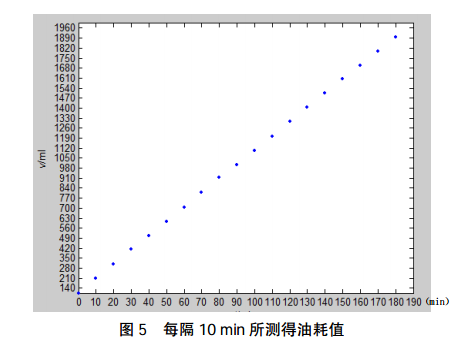
2. Fuel consumption test experiment under square towing driving conditions
Fangtuo carried out a fuel consumption test on a real vehicle under no-load conditions. Filled up the fuel tank before leaving the vehicle, and then traveled 4.3 km along the designated route from the gas station, then returned to the gas station along the original road and filled up the fuel tank. Weifang tow the actual fuel consumption of 8.6 km, and record the value on the display of the fuel consumption device at this time. Repeat the above experiment, the data obtained are shown in 2.
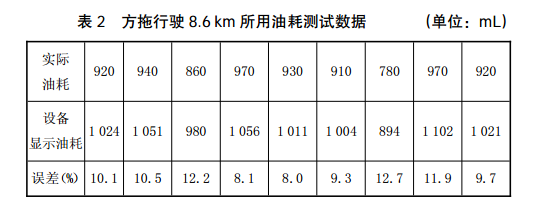
It can be seen from Table 2 that the square trailer drove a total of 77.4 km, and the actual total fuel consumption was 8.2L, which translates to a fuel consumption of about 10.59L per 100 kilometers, which is in line with the fuel consumption value of the square trailer provided by the manufacturer, and the fuel consumption device shows that the square trailer travels 77.4 The total fuel used by the km is 9.134L, which is 0.934L different from the actual fuel used by the square trailer. The error is 10.22%, which is lower than the error value calculated by the traditional fuel consumption measurement method.
As my country attaches great importance to agricultural machinery production projects, the market for flow meters suitable for measuring agricultural machinery fuel consumption is huge. Actively researching and developing new flowmeter products, combined with the application of advanced microelectronic control technology to measure agricultural machinery fuel consumption has important development significance. The agricultural machinery fuel consumption measurement method proposed in this paper has the characteristics of simplicity, practicality and high reliability, and it has important reference significance for the future research on higher precision fuel consumption testers.
The main pain points in obtaining customers in foreign trade are fierce market competition, high customer acquisition costs, low customer stickiness, and single marketing methods. With the changes in the market environment, traditional marketing methods have been unable to meet customer needs. Enterprises need innovative marketing methods and technical means to improve customer stickiness and loyalty, reduce customer acquisition costs, in order to obtain more business opportunities in the fierce market competition.
test ai keyword2 gfdxv
Guangdong ganzhou , https://www.cn-gangdao.com